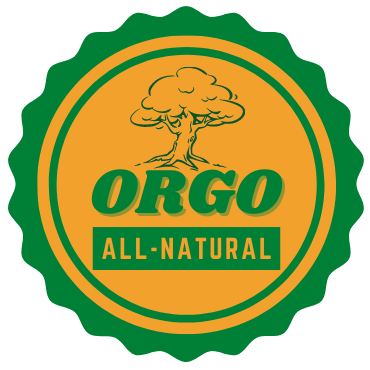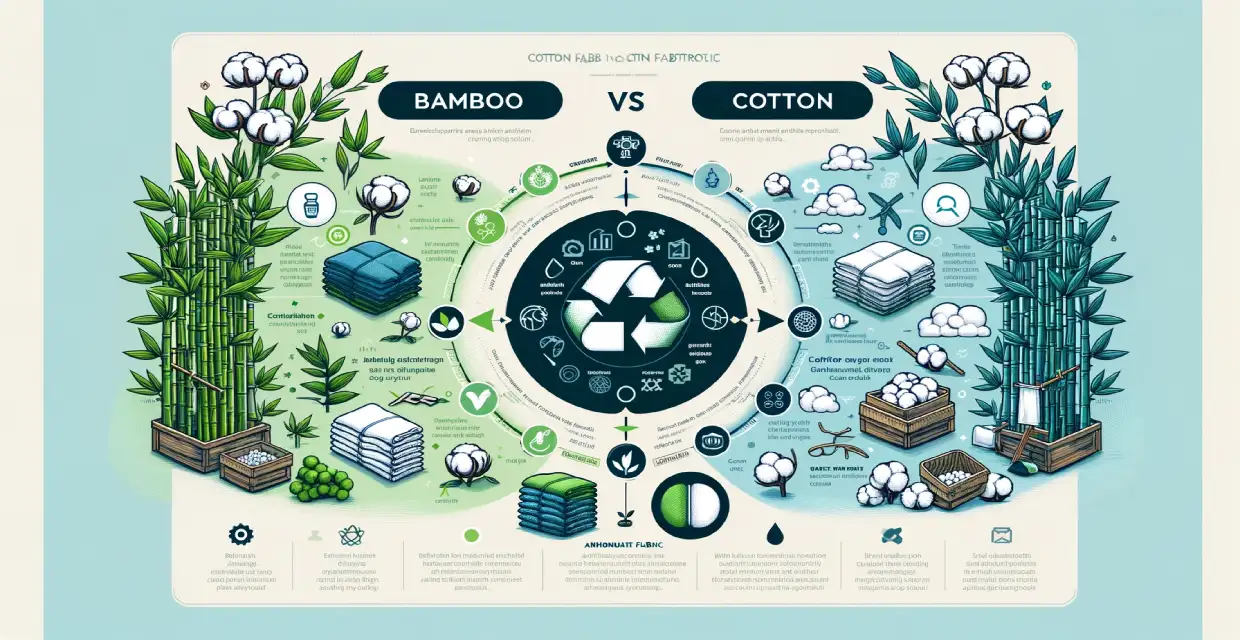The difference between bamboo and cotton fabrics becomes crucial while investigating eco-friendly and cosy fabric options. Because of its eco-friendly qualities, bamboo fabric has become popular in recent times. It is mainly made from the quickly spreading bamboo plant. Bamboo fabric is well known for its inherent antibacterial qualities and capacity to wick away moisture. It goes well as a choice for sportswear and underwear. Conversely, the fluffy fibres of the cotton plant are used to make cotton, a traditional and popular textile. Cotton is soft and breathable, but it requires a lot of water and pesticides to produce. In this aspect, it is bad for the environment. Analyzing these fabrics’ effects on the environment, their comfort, and their usefulness might help consumers to pick eco-friendly alternatives. To help you make decisions that are in line with your preferences and environmental consciousness, we will examine the unique characteristics of bamboo and cotton fabrics in this article. So, stay with us until the end.
What is Bamboo Fabric?
In the textile business, bamboo towel is derived from the pulp of the bamboo plant. Bamboo cloth is well known for being breathable and soft, and it shares characteristics with more opulent materials like silk. The bamboo fibres are broken down throughout the production process to create a pulp that is spun into yarn for weaving. Bamboo is an eco-friendly option because of its quick growth and low requirement for pesticides. Bamboo fabric’s inherent antibacterial qualities and capacity to wick away moisture satisfy the needs of eco-conscious as well as comfort-seeking customers. Let’s dig into the details about the bamboo fabric.
| Source: Bamboo fabric is derived from the bamboo plant’s pulp. |
| Sustainability: Bamboo’s quick growth and low pesticide requirement give it an eco-friendly reputation. |
| Properties: Able to wick away moisture and naturally antimicrobial. |
| Texture: Known for feeling silky and soft. |
| Comfort: It is a breathable yet comfortable material to wear. |
Also Read:- Bamboo Towel Brands in India
What is Cotton Fabric?
Cotton fabric is a multipurpose and often utilized material. It is widely used for its inherent comfort and breathability. This fabric, which is made from the fibres of the cotton plant’s seed hairs, has long been a mainstay in the textile business. A range of clothes and household items can be made with cotton fabric. Cotton is popular in warm settings because of its natural ability to control moisture and provide air circulation. It can be easily dyed in a wide variety of colours and designs. Cotton fabric is still a popular option for anything from bed linens to casual attire since it combines comfort, toughness, and style. The cotton fabric’s details are presented below:
| Source: Derived from the seed hairs of the cotton plants. |
| Nature: The fabric is well-known for its ability to facilitate optimal air circulation and breathability. |
| Versatile Use: Because of its adaptability, it is widely used in the textile sector for apparel and home items. |
| Dye-Friendly: Easily dyed, providing a broad palette of hues and patterns for a variety of designs. |
| Fashion Appeal: Cotton fabric is still a popular choice for all sorts of clothes for its comfort, durability, and aesthetic adaptability. |
Also Read:- Bamboo Toothbrush Brands
Difference Between Bamboo Fabric and Cotton Fabric
The source and characteristics of bamboo and cotton fabrics are the main differences between cotton fabric and bamboo fabric. The cotton plant yields a fabric that is soft, absorbent, and breathable. Whereas, bamboo cloth comes from the bamboo plant and has antibacterial qualities. Because bamboo grows quickly and requires fewer chemicals, bamboo cloth is more environmentally friendly. Bamboo cloth appeals to individuals looking for sustainable and hypoallergenic solutions, while cotton is a traditional choice due to its comfort. When making your selection between cotton and bamboo materials, take a look at our table below which represents the difference between cotton fabric and bamboo fabric from every angle.
| Aspect | Bamboo Fabric | Cotton Fabric |
| Source | Derived from bamboo plants | Harvested from cotton plants |
| Environmental Impact | Generally considered more sustainable due to bamboo’s rapid growth and minimal need for pesticides | Cotton production may involve significant water usage and pesticide use, impacting the environment |
| Texture | Softer and smoother | Natural softness, but can vary based on weave and processing |
| Moisture Absorption | High moisture-wicking properties, keeping the skin dry | Good moisture absorption, but may feel heavier when wet |
| Breathability | Highly breathable | Breathable, but may vary based on weave and thickness |
| Durability | Generally durable, but may vary with processing methods | Durable fabric, but can be prone to wrinkles |
| Antibacterial Properties | Naturally antibacterial and odor-resistant | Lacks inherent antibacterial properties |
| Temperature Regulation | Regulates temperature well, suitable for various climates | Breathable, but may not regulate temperature as effectively as bamboo |
Also Read:- Bamboo Clothing With Their Benefits
Conclusion
In conclusion, several things play a role in the argument between cotton and bamboo fabric what is the difference? Cotton offers familiarity and breathability. Bamboo cloth, on the other hand, offers a sustainable substitute. While cotton is the most popular material for softness, bamboo fabric has a smooth feel. There are clear benefits to both materials, but bamboo fabric stands out for being more environmentally friendly. The choice between cotton and bamboo fabric ultimately comes down to comfort and personal tastes. Each fibre has distinct advantages in the rapidly changing world of eco-conscious design.
Also Read:- Bamboo vs Plastic Toothbrush





































